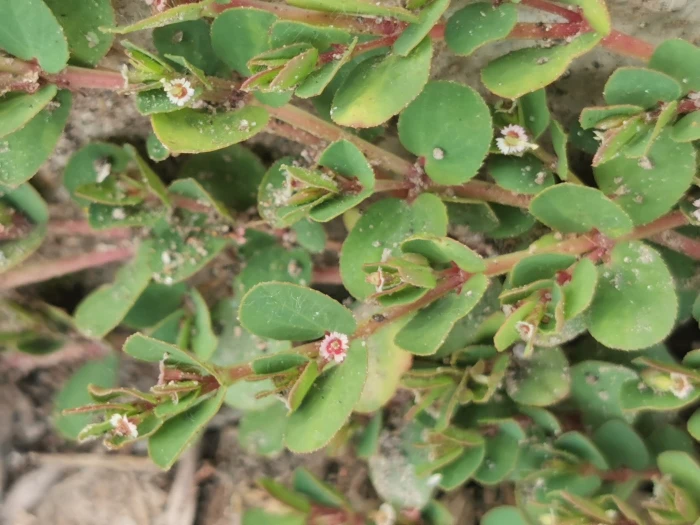Thyme-Leaf Spurge
(Euphorbia serpillifolia)
Thyme-Leaf Spurge (Euphorbia serpillifolia)
/
/

M. Socorro González Elizondo
CC BY-SA 4.0
Image By:
M. Socorro González Elizondo
Recorded By:
Copyright:
CC BY-SA 4.0
Copyright Notice:
Photo by: M. Socorro González Elizondo | License Type: CC BY-SA 4.0 | License URL: http://creativecommons.org/licenses/by-sa/4.0/ | Rights Holder: M. Socorro González Elizondo | Publisher: iNaturalist | Date Created: 2022-10-09T18:24:24-07:00 |



























Estimated Native Range
Climate Requirements
| • Precipitation | 3" - 87" |
| • High Temp. | 52°F - 106°F |
| • Low Temp. | -16°F - 63°F |
Summary
Euphorbia serpillifolia, commonly known as Thyme-Leaf Spurge, Thymeleaf Sandmat, Sand Mat, Thyme-Leaved Spurge, or Thyme-Leaved Sandmat, is an annual herb native to open, sunny habitats including grasslands, coastal dunes, and disturbed sites in a large portion of North America. It typically grows rapidly to a height of 0.1-0.3 feet (0.03-0.1 meters) and spreads 0.5-1 feet (0.2-0.3 meters), forming a low, mat-like ground cover. The plant has small, yellow, inconspicuous flowers that bloom in the summer, and its foliage resembles that of thyme, hence the common name.
Thyme-Leaf Spurge is valued for its drought tolerance and ability to thrive in poor, sandy soils, making it suitable for xeriscaping and rock gardens. It is often used as a ground cover or filler in sunny borders and can be a low-maintenance option for gardeners seeking coverage in challenging conditions. It requires full sun or part shade and prefers fast-draining sandy or loamy soils with low water needs once established. While it is not known for significant pest or disease issues, it can self-seed prolifically, which may be undesirable in some settings. Gardeners should handle the plant with care, as the sap can be irritating to the skin and toxic if ingested.CC BY-SA 4.0
Thyme-Leaf Spurge is valued for its drought tolerance and ability to thrive in poor, sandy soils, making it suitable for xeriscaping and rock gardens. It is often used as a ground cover or filler in sunny borders and can be a low-maintenance option for gardeners seeking coverage in challenging conditions. It requires full sun or part shade and prefers fast-draining sandy or loamy soils with low water needs once established. While it is not known for significant pest or disease issues, it can self-seed prolifically, which may be undesirable in some settings. Gardeners should handle the plant with care, as the sap can be irritating to the skin and toxic if ingested.CC BY-SA 4.0
Plant Description
- Plant Type:
- Height: 0.1-0.3 feet
- Width: 0.5-1 feet
- Growth Rate: Rapid
- Flower Color: Yellow
- Flowering Season: Summer
- Leaf Retention:
Growth Requirements
- Sun: Full Sun, Part Shade
- Water: Low
- Drainage: Fast
Common Uses
Drought Tolerant, Low Maintenance
Natural Habitat
Open, sunny habitats including grasslands, coastal dunes, and disturbed sites
Other Names
Common Names: Thymeleaf Sandmat , Sand Mat , Thyme-Leaved Spurge , Thyme-Leaved Sandmat
Scientific Names: Euphorbia serpillifolia , Chamaesyce serpillifolia , Euphorbia hirtula , Euphorbia serpillifolia var. genuina , Euphorbia serpyllifolia subsp. hirtula
GBIF Accepted Name: Euphorbia serpillifolia